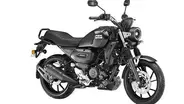Decoding DRS in Formula 1: Mechanism, Operation, and the Question of Automation.
DRS, short for Drag Reduction System, frequently takes the spotlight during F1 broadcasts. But what exactly does it entail, and how does it function?

The Drag Reduction System (DRS) is a driver-controlled device in Formula 1 designed to facilitate overtaking and enhance wheel-to-wheel racing. Introduced in 2011, the system allows drivers to open a flap in their rear wing, reducing drag levels and increasing top speed when within one second of the car in front. Despite being a part of the sport since then, DRS remains a topic of controversy among both F1 competitors and fans.

The Drag Reduction System (DRS) in Formula 1 is a technological feature introduced to enhance overtaking opportunities during races. Here are the details of how DRS works:
1. Introduction and Purpose:
Year of Introduction: DRS was introduced in the 2011 Formula 1 season.
Objective: The primary goal of DRS is to increase the chances of overtaking and improve the spectacle of wheel-to-wheel racing.
2. Mechanism:
Driver-Controlled: DRS is a driver-controlled system, meaning the decision to activate it lies with the driver.
Rear Wing Adjustment: The system involves adjusting a flap in the car's rear wing to reduce aerodynamic drag, thus increasing straight-line speed.
3. Activation Criteria:
One-Second Rule: DRS can be activated by a driver when they are within one second of the car in front, as measured at a designated 'detection' point on the track.
Detection Point: Electronic timing loops on the track surface measure the time gap between cars at the detection point.
4. Activation Zones:
Location: DRS activation zones are typically placed on main straights of the racetrack.
Variability: The number and location of DRS zones vary from track to track and are determined based on the circuit's characteristics.

5. Activation Method:
Steering Wheel Button: Drivers activate DRS by pressing a designated button on their steering wheel.
Manual Control: It requires a deliberate action from the driver and is not an automatic or passive system.
6. Deactivation:
Lifting or Braking: DRS is automatically deactivated when the driver lifts off the accelerator or applies the brakes.
Manual Deactivation: Drivers can also manually deactivate DRS by pressing the button again.
7. Restrictions:
Limited Usage: DRS usage is restricted during specific phases of the race.
First Two Laps: DRS cannot be used during the first two laps of a race.
Safety Car or Red Flag Restarts: After safety car or red flag restarts, DRS is initially disabled.
Unsafe Conditions: Race officials can disable DRS in unsafe conditions, such as rain or incidents on the track.
8. Controversies and Criticisms:
Artificial Overtaking: Critics argue that DRS can lead to "artificial" overtaking, as it provides a speed boost in specific situations.
Skill Diminishment: Some suggest that the use of DRS diminishes the skill required for overtaking maneuvers.
9. Usage in Other Series:
Formula 2 and Formula 3: DRS is also utilized in the support series of Formula 2 and Formula 3.
10. Evolution and Future Considerations:
Adaptation: DRS has evolved over the years, with considerations for its continued usage and potential adjustments in the future.
In summary, DRS is a driver-activated system aimed at promoting overtaking by reducing aerodynamic drag. Its implementation has sparked discussions within the Formula 1 community regarding its impact on race dynamics and the overall skill involved in overtaking maneuvers.

DRS primarily serves as an overtaking aid, making it easier for drivers to pass competitors. It operates by enabling drivers to increase straight-line speed, thus aiding in overtaking maneuvers. Critics argue that using DRS can artificially boost a driver's speed, potentially diminishing the skill required for overtaking. However, DRS is not a straightforward 'overtake button,' as it is meant to assist overtaking in situations where the pursuing car is stuck in turbulent air.
The number of DRS zones on a track can vary, typically placed on main straights. The system is activated when a driver is within one second of the car in front, as measured at a specific 'detection' point. Drivers manually activate DRS via a steering wheel button, closing the flap by lifting off the accelerator or pressing the brake pedal.
While DRS has faced criticism, especially in the context of modern F1 cars designed to reduce the 'dirty air' effect, it continues to play a significant role in overtaking maneuvers. DRS usage is restricted during the first two laps of a race, after safety car or red flag restarts, and under unsafe conditions. Defending drivers can also use DRS if they are within one second of a car in front.
In addition to Formula 1, DRS is employed in support series like Formula 2 and Formula 3. Other racing series have used similar overtaking aids, such as push-to-pass systems in IndyCar and Super Formula, as well as Formula E's attack mode. While DRS remains a topic of debate, its continued usage and potential future adjustments contribute to ongoing discussions in the world of motorsports.

















































Kommentare